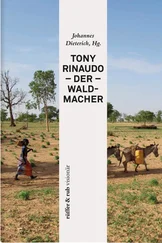The same is true for the post-war generation all across the European continent, although nowhere outside Britain was comprehensive social coverage attempted on so generous a scale and all at once. Thanks to the coming of welfare states Europeans ate more and (mostly) better, lived longer and healthier lives, were better housed and clothed than ever before. Above all, they were more secure. It is not by chance that most Europeans, when asked what they think of their public services, nearly always speak first of the safety net of insurance and pension provisions which the post-war state has provided for them. Even in Switzerland, a country distinctly under-provisioned by European welfare standards, the December 1948 Federal Old Age and Survivors’ Insurance Act is regarded by many citizens as one of their country’s finest achievements.
The Welfare State did not come cheap. Its cost, to countries not yet recovered from the slump of the thirties and the destruction of the war, was very considerable. France, which devoted just 5 percent of its Gross Domestic Product (GDP) to social services in 1938, was committing 8.2 percent in 1949—a 64 percent increase. In Britain by 1949 nearly 17 percent of all public expenditure was on social security alone (that is, not including the public provision of services and facilities not included under this heading), a 50 percent increase over the 1938 level at a moment of severe strain on the country’s finances. Even in Italy, a much poorer country whose governments tried to avoid carrying high social security costs by diverting services and provisions into the private sector or the workplace, government spending on social services as a share of GDP rose from 3.3 percent in 1938 to 5.2 percent in 1949.
Why were Europeans willing to pay so much for insurance and other long-term welfare provisions, at a time when life was still truly hard and material shortages endemic? The first reason is that, precisely because times were difficult, the postwar welfare systems were a guarantee of a certain minimum of justice, or fairness. This was not the spiritual and social revolution for which many in the wartime Resistance had dreamed, but it was a first step away from the hopelessness and cynicism of the pre-war years.
Secondly, the welfare states of western Europe were not politically divisive. They were socially re-distributive in general intent (some more than others) but not at all revolutionary—they did not ‘soak the rich’. On the contrary: although the greatest immediate advantage was felt by the poor, the real long-term beneficiaries were the professional and commercial middle class. In many cases they had not previously been eligible for work-related health, unemployment or retirement benefits and had been obliged, before the war, to purchase such services and benefits from the private sector. Now they had full access to them, either free or at low cost. Taken with the state provision of free or subsidized secondary and higher education for their children, this left the salaried professional and white-collar classes with both a better quality of life and more disposable income. Far from dividing the social classes against each other, the European welfare state bound them closer together than ever before, with a common interest in its preservation and defense.
But the chief basis of support for state-funded welfare and social service provisions lay in the popular sense that these corresponded to the proper tasks of government. The post-war state all across Europe was a ‘social’ state, with implicit (and often constitutionally explicit) responsibility for the well-being of its citizens. It had an obligation to provide not only the institutions and services necessary for a well-regulated, safe and prosperous land, but also to improve the condition of the population, as measured by a broad and expanding range of indices. Whether it could actually meet all these demands was another matter.
Obviously it would prove easier to achieve the ideals of the social state, ‘from cradle to grave’, in the small population of a wealthy, homogenous country like Sweden than in one like Italy. But faith in the state was at least as marked in poor lands as in rich ones—perhaps more so, since in such places only the state could offer hope or salvation to the mass of the population. And in the aftermath of depression, occupation and civil war, the state—as an agent of welfare, security and fairness—was a vital source of community and social cohesion. Many commentators today are disposed to see state-ownership and state-dependency as the European problem, and salvation-from-above as the illusion of the age. But for the generation of 1945 some workable balance between political freedoms and the rational, equitable distributive function of the administrative state seemed the only sensible route out of the abyss.
The post-1945 urge for change went well beyond the provision of welfare. The years following World War Two were a sort of foreshortened Age of Reform, during which many long-pressing problems were belatedly addressed. One of the most important of these was the matter of agrarian reform, which many well-informed contemporaries saw as Europe’s most pressing dilemma. The weight of the past still hung heavily upon the continent’s peasantry. Only in England, the Low Countries, Denmark, the Alpine lands and parts of France was it possible to speak of a prosperous, independent class of farmers. The overwhelming majority of Europe’s predominantly rural population lived in conditions of indebted penury.
One reason for this was that large tracts of the best arable and, especially, pasture land were still in the hands of a relatively few wealthy landowners, often absent and in many cases adamantly opposed to any improvement in the conditions of their land, their tenants or their workers. Another factor was the long decline in agricultural prices relative to industrial ones, a process exacerbated since the eighteen-seventies by the importation of cheap grain and later meat from the Americas and the British Dominions. By the 1930s European peasants had lived for nearly three generations with this relentless deterioration in their circumstances. Many—from Greece, Southern Italy, the Balkans, central and eastern Europe—had emigrated: to the US, Argentina and elsewhere. Those who stayed behind had often proved easy prey for nationalist and Fascist demagogues. After the war it was thus widely believed, particularly on the Left, that Fascism appealed especially to desperate peasants and that any revival of Fascism in Europe would begin in the countryside. The agrarian problem was thus twofold: how to improve the economic prospects of the peasant and thereby wean him from authoritarian temptation.
The first objective had already been attempted after World War One through a series of land reforms—notably in Romania and Italy but in some measure virtually everywhere—whose goal was to redistribute large holdings, reduce the number of ‘microfundia’ (inefficient plotlets) and give farmers a better chance of producing efficiently for the market. But these reforms failed in their goal—partly because in the disastrous economic circumstances of inter-war Europe, with prices falling even faster than before 1914, the newly ‘independent’ landholding peasants were actually more vulnerable than ever.
After World War Two agrarian reform was once again attempted. In a Romanian land reform of March 1945, one million hectares of land were taken out of the hands of ‘kulaks’ and ‘war criminals’ and distributed to upwards of 600,000 hitherto poor or landless peasants. In Hungary, where the inter-war regime of Admiral Horthy had blocked any significant land redistribution, one-third of the country’s surface area was expropriated from the previous owners, in accordance with the December 1944 Szeged Programme of the provisional post-war coalition government. The wartime Czechoslovak National Front government drew up a similar programme the same year and duly redistributed significant tracts of land—notably farms seized from Sudeten Germans and Hungarians—in the immediate post-war months. Between 1944 and 1947 every east European country saw the creation of a large class of smallholders beholden to the new authorities for their land. A few years later those same smallholders would in their turn be dispossessed by the Communist regimes in their drive for collectivization. But in the meantime whole classes of landed gentry and large farmers, in Poland, East Prussia, Hungary, Romania and Yugoslavia simply disappeared.
Читать дальше












